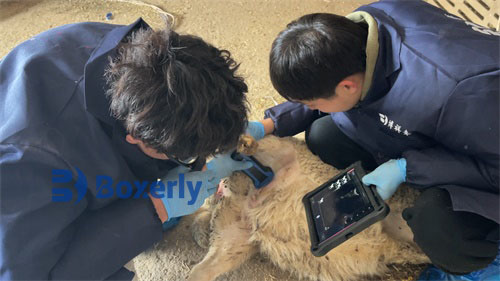Backfat detection is an important part of cattle health management, which is of great significance for ensuring the health and production performance of cattle. This article will introduce the basic principles, methods, influencing factors, and result interpretation of cattle backfat detection, helping readers better understand this important link.
Beef backfat eye muscle ultrasound machine
The basic principle of cattle backfat detection
Backfat is an important indicator for measuring fat deposition in cattle, reflecting their body size and health status. By detecting the backfat thickness of cattle, we can understand their fat deposition situation, and thus judge their production performance and health status.
test method
The detection of cow backfat is usually measured using an ultrasonic backfat analyzer. The specific operation steps are as follows:
1. Select a healthy adult cow as the testing subject;
2. Fix the cow on the testing platform to ensure its natural extension;
3. Use an ultrasonic measuring instrument to scan the back of cattle and obtain data on backfat thickness.
influence factor
The factors that affect the results of cattle backfat testing include cattle breed, age, nutritional status, health status, etc. There are differences in backfat thickness among different breeds of cattle; As cattle age, the thickness of their backfat also changes; Insufficient or excessive nutrition can affect the backfat thickness of cattle.
Interpretation of Results
The results of cattle backfat testing can be recorded and analyzed using an ultrasonic measuring instrument. Based on the data of backfat thickness, the health status and production performance of cattle can be evaluated. Generally speaking, cows with backfat thickness within the normal range have better production performance, while those with backfat thickness outside the normal range may indicate health problems or overnutrition.
In summary, cattle backfat detection is an important part of cattle health management, which is of great significance for ensuring the health and production performance of cattle. By using the correct detection methods and precautions, we can obtain accurate detection results, providing a basis for the health management of cattle. In future work, we need to further study various factors that affect cattle backfat, in order to provide more basis for better management and improvement of cattle production performance.
I hope the above content is helpful to you. If you have any further questions about cow backfat testing, please feel free to ask me at any time.








